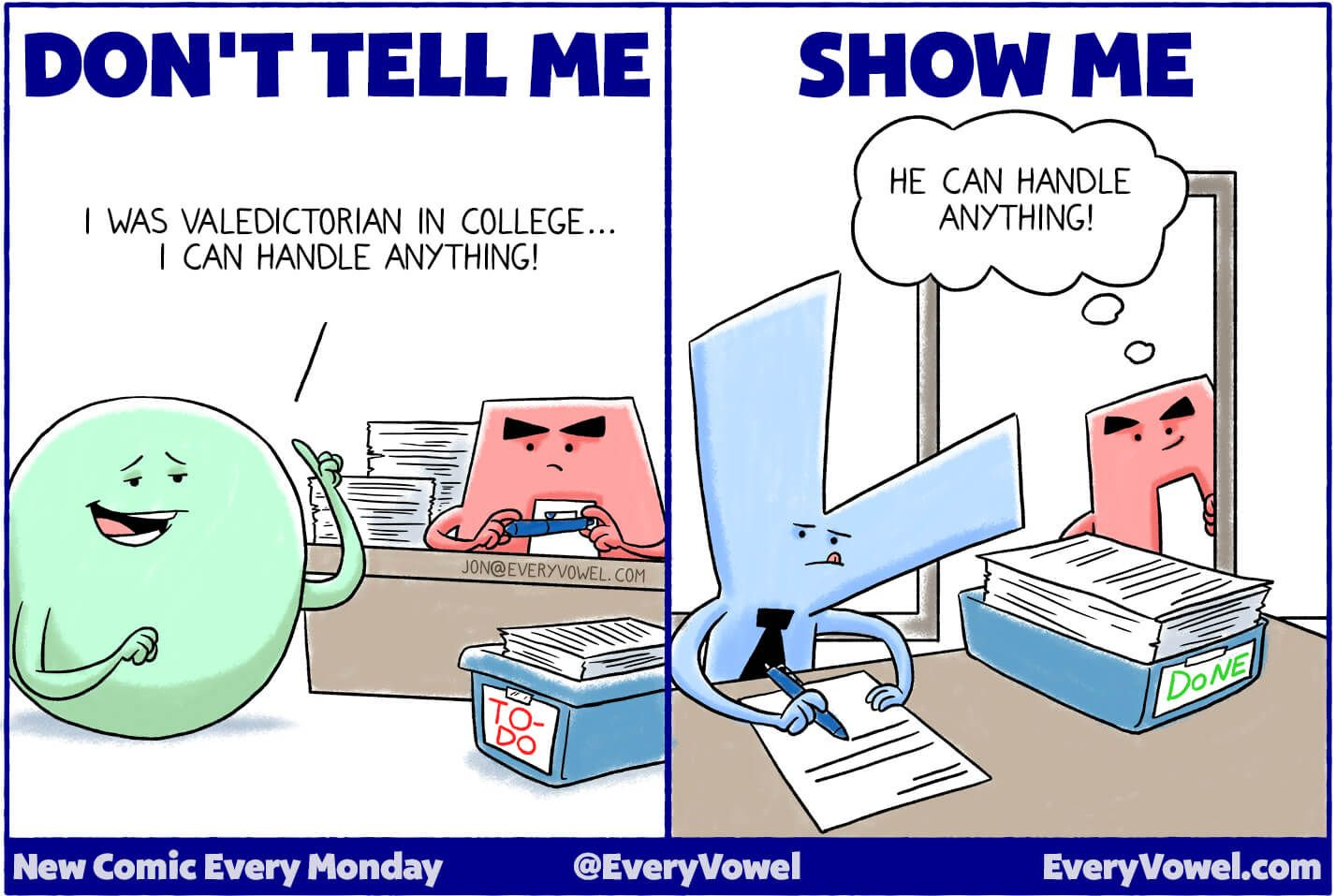Use "Show, Don't Tell" to Build Credibility
A simple mantra to build trust, communicate effectively, and get buy-in
I'm so passionate about product management!
This is one of the most infuriating things to hear. 🤬
Anyone can say they are passionate about a topic. In fact, LinkedIn has “passionate” as one of their top 10 buzzwords, and CNBC has it as one of the phrases to delete off your resume. Saying you’re "passionate" has become meaningless.
But here's the thing: passionate people don't say they're passionate. Instead, they do something about it.
People who want to communicate their true passions follow a classic writing rule: show, don't tell. From Wikipedia (emphasis added):
Show, don't tell is a technique used in various kinds of texts to allow the reader to experience the story through action, words, thoughts, senses, and feelings rather than through the author's exposition, summarization, and description.
In short: back up your claimed passion with actions or results. This will make your claim more credible. For example:
Passionate about knitting? Have an Instagram Shop where you sell your designs.
Passionate about financial inclusion? Volunteer at tax workshops for underrepresented groups.
Passionate about product management? Build a product!
“Show, don’t tell” isn’t just for passion; across the board, this principle can make you more trustworthy, help you develop buy-in and allow you to communicate more effectively. Here’s how we can use this principle in common situations.
Show, Don’t Tell Examples
🤝 Networking
Telling: “I want to get into tech. Do you have any advice?”
Showing: “I have a podcast where I interview tech leaders and get their advice for college students entering the field. Would you like to be on it?”
Why this works: Provide value to the person you’re interested in. This creates a more mutually beneficial relationship while also demonstrating your skills/commitment to the field. Plus, you’ll get that advice in the end!
💼 Performance Reviews
Telling: “I deserve a promotion.”
Showing: “My ability to lead project X, improve topline growth by 20% and manage two junior PMs qualifies me for a promotion to level 3.”
Why this works: By anticipating the question (in this case, “why do you deserve a promotion?”), you can appear more confident, qualified and aware of the business realities.
💌 Cold Emails
Telling: "I'm passionate about tech and want to get into PM. Can we chat?"
Showing: "I’m working with 1 designer and 3 engineers on an app for music lovers to connect over their favourite artist. We launched on Product Hunt last week - check it out! This side project makes me think I’d enjoy a career in product management. Can we chat?"
Why this works: Showing that you’re building something demonstrates proof of work — the fact that you’ve put time, effort and thought into their passion before asking for help.
👩🏫 Presentations
Telling: “Our mission is to make checkout for micro-merchants seamless.”
Showing: “Last year, we increased checkout conversions by 35% for micro-merchants.”
Why this works: Focus on results, not desires. This guides the presentation to more actionable (rather than theoretical) conversations.
📝 Resumes
Telling: “Managed social media accounts for a brand with 30K followers.”
Showing: “Increased social media following by 10% (+3K followers) through a 6-week referral campaign.”
Why this works: This shows the impact of the work, which is always more important to a prospective employer.
Q: What if you have nothing to show?
Answer: Build something to “show”! If you’re “telling” without the experience, actions or results to back it up, then you risk being not taken seriously.
And if you’re new here, join thousands of product managers who are growing their career by subscribing below:
Until next time,






Huge fan of the way you format your newsletters -- from the use of emojis and GIFs to the spacing and emphasis on bold and italic fonts.
Stealing with pride!